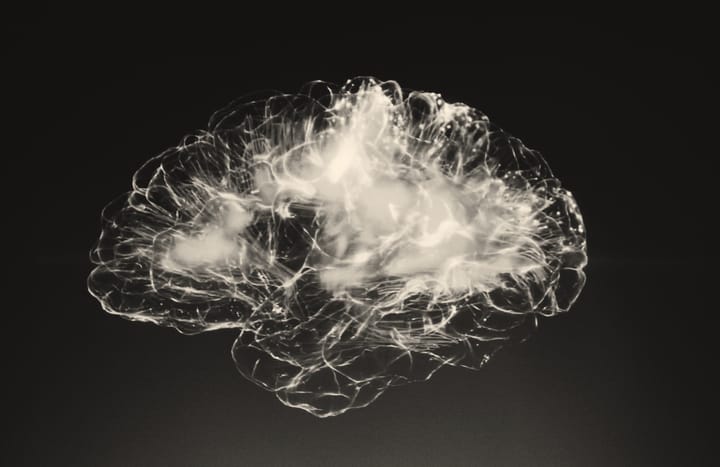New imaging technique detects changes in athletes with recurrent head trauma "at work"

Concussions are common among athletes. Even after symptoms like headaches and nausea fade, some brain functions may not bounce back as quickly.
One area that seems to take longer to heal is dual task performance—doing a mental task and a physical one at the same time. While athletes often return to normal performance on single tasks within days or weeks, dual-task abilities can lag behind. This is likely because these activities place more demand on the brain’s coordination and attention systems.
Changes in brain function, such as inflammation or disrupted communication between brain regions, can last months or even longer. In fact, imaging studies have shown these changes may still be present a year after a concussion. Researchers are still trying to determine whether these changes mean the brain is healing or if they signal ongoing damage.
Athletes who have had more than one concussion may face more serious problems. If the brain has not fully recovered from the first injury, a second one can worsen symptoms and increase recovery time.
Repeated concussions have been linked to long-term issues, including memory problems, mood disorders, and sleep disturbances. In some cases, the risk of future brain degeneration is higher.
These concerns make it essential to understand how the brain responds to repeated concussions over time, especially during complex tasks that involve both thinking and movement.
A new type of brain scan, called functional near-infrared spectroscopy, or fNIRS, is now helping scientists look deeper into this question. Unlike traditional brain imaging tools like MRI, fNIRS can be used while people are moving. That's quite amazing!
A new way to study brain activity in motion - the study
The technology works by shining harmless infrared light through the scalp to track changes in blood oxygen levels in specific brain regions. These changes are indirect signs of brain activity. When a brain area is working harder, it uses more oxygen, which the fNIRS system can detect.
In this study, researchers used fNIRS to track how the brains of college athletes responded during dual tasks.
These tasks included both upper and lower body challenges, such as walking around obstacles while doing word games or throwing a tennis ball while solving math problems.
The goal was to see how brain activity patterns differed between athletes who had never had a concussion and those who had experienced two or more.
Importantly, all athletes in the study had been medically cleared to return to play and were at least a year past their most recent concussion.
Signs of the brain compensating after injury
The results showed something unexpected. Even though athletes with multiple concussions performed just as well as the healthy athletes on the dual tasks, their brains were working differently.
In particular, these athletes showed higher activation in the front part of the brain (known as the prefrontal cortex) during simple motor tasks, like walking or catching a ball.
This region is usually more involved in thinking and planning than in basic movement. So why would it light up more during a physical task?
Researchers believe this could be a sign of compensation. In other words, the brain might be working harder than normal to carry out tasks that used to be "just" automatic.
This pattern is seen in other conditions, too, like in older adults whose brains recruit extra areas to make up for age-related decline.
This increased brain activity may help maintain performance, but it also suggests that the brain is not functioning as efficiently as before.
So, even when athletes feel fully recovered, their brains may still be adapting to hidden deficits caused by earlier injuries. They may still be in need of recovery!
Reduced brain activation in complex tasks
Interestingly, the pattern flipped when athletes with past concussions moved from single to dual tasks. Instead of recruiting more brain power, as would normally be expected when tasks get harder, these athletes showed reduced activation in key brain regions during the dual tasks.
For example, in the wall-toss and math combination, the prefrontal cortex showed less activity than during the single motor task. A similar drop in activity was seen in the motor cortex during the walking and word game combination.
This is surprising because healthy brains typically show increased activity in these areas under dual-task conditions.
This lower-than-expected brain activation suggests that certain regions become overloaded or disengaged when challenged with multiple demands, when the challenge becomes too much.
Despite this, the athletes still performed well on the tasks, which means other parts of the brain may have stepped in to help.
Nevertheless, the drop in activity raises concerns about long-term brain efficiency and the potential for underlying vulnerability. If the brain is unable to ramp up its activity during harder tasks, it might not cope as well under pressure or in more unpredictable sports situations.
What the findings mean for athletes and brain health
These findings highlight how concussion recovery is more complex than it appears.
Just because symptoms go away does not mean the brain is fully healed. Athletes with repeated concussions may return to play with normal behavior but altered brain function.
This mismatch could be due to ongoing changes in how the brain supports movement, attention, and coordination. The study’s results suggest that these changes persist long after the last injury, sometimes over a year later, and may not be picked up by standard clinical tests.
The use of fNIRS provides a valuable window into how the brain operates during real-world activities, not just while lying still in a scanner.
The altered brain activity seen in athletes with a history of multiple concussions adds to growing evidence that repeat injuries can change how the brain works, even when outward performance appears normal.
Understanding these brain-level adaptations may change decisions about when it’s truly safe for athletes to return to play.
About the scientific paper:
First author: Andrew C. Hagen, USA
Published: Frontiers in Human Neuroscience, December 2024
Link to paper: https://www.frontiersin.org/journals/human-neuroscience/articles/10.3389/fnhum.2024.1515514/full




Comments ()